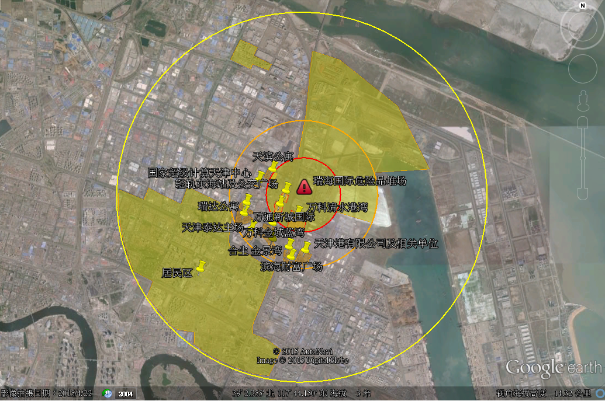The Evacuation Zone:
Residents within the 3km safety zone have been evacuated due to the presence of hazardous chemicals. However, seeing as the precise make-up of the “cocktail of chemicals” which have been released in the blast remains unclear, and that wind risks spreading hazardous pollutants to other areas of the city, a 5km evacuation zone could ensure safety far more effectively.
Greenpeace strongly advises relevant authorities to provide residents with protective gear, relevant information and to pay close attention to ongoing developments at the blast site and the wind direction and its potential influence outside of the 3km evacuation zone.
Independent satellite image of the 3km safety zone and 5km zone surrounding the Tianjin blast site. The yellow pins indicate residential areas, and the red triangles bodies of water, including rivers, lakes and ocean.
Predictions on Wind Direction
According to NOAA-HYSPLIT the wind direction over the next 24 hours will remain north to north easterly. At around 0400 tomorrow the wind may shift to an easterly direction. The spread of hazardous chemicals will have no impact on southern and western areas and will not spread very rapidly.
Identifying Hazardous Chemicals
Of particular concern is the type, quantities and concentrations of chemicals which were released during the blast. Of these, sodium cyanide (NaCN) is of particular danger to human health. Greenpeace urges the relevant authorities to make that information public as early as possible. Measures to mitigate health and environmental damage should be taken accordingly.



